On Thursday, March 30, over 500 design professionals convened at SANAA’s sinuous River building in New Canaan, Connecticut, for the second iteration of Grace Farms’ Design for Freedom Summit. Begun in 2017 by Grace Farms Foundation founder and CEO Sharon Prince and the late Architect’s Newspaper co-founder Bill Menking, the Design for Freedom (DFF) initiative calls upon architects and the larger engineering, and construction industries to address the pervasive presence of forced and child labor that is often obscured by the disaggregated nature of the global building materials supply chain.
Last year’s summit marked the release of the DFF Toolkit, which profiles high-risk materials and offers step-by-step instructions in ensuring ethical sourcing. Since then, the toolkit has been incorporated into several pilot projects, including Black Chapel, Chicago artist Theaster Gates’s 2022 pavilion for the Serpentine Gallery in London, and architect Nina Cooke John’s recently unveiled Harriet Tubman monument in Newark, New Jersey. At last week’s event, which featured panels addressing the different aspects and challenges of a slavery-free building supply chain, a new slate of DFF pilot projects was announced. Among them: Diana Kellogg Architects’ regeneration of a walled city in Jodphur, India and a multi-purpose building designed by MASS Design Group for Unshattered, a non-profit social enterprise based in New York’s Hudson Valley. Outside of the new pilot projects, Kai-Uwe Bergmann of Bjarke Ingels Group also announced the firm's commitment to ethical sourcing strategies for forthcoming projects.
The first panel, moderated by Prince, convened Cooke John, Kellogg, and Jing Liu, architect and co-founder of SO – IL, with Pete Hammill of Turner Construction and Curtis Clay of the U.S. State Department’s Bureau of Overseas Building Operations to discuss progress made and future aspirations for DFF pilot projects. Cooke John spoke about the process of incorporating DFF principles into her Shadow of a Face monument in Newark, mentioning that she signed on to the pledge after the project had already been designed. She argued for DFF as a natural expansion of the principles of “human-centered design” that many contemporary architects embrace. During the panel, Prince revealed that Cooke John is currently working on the design of a Design for Freedom exhibition to be unveiled at Grace Farms this fall.
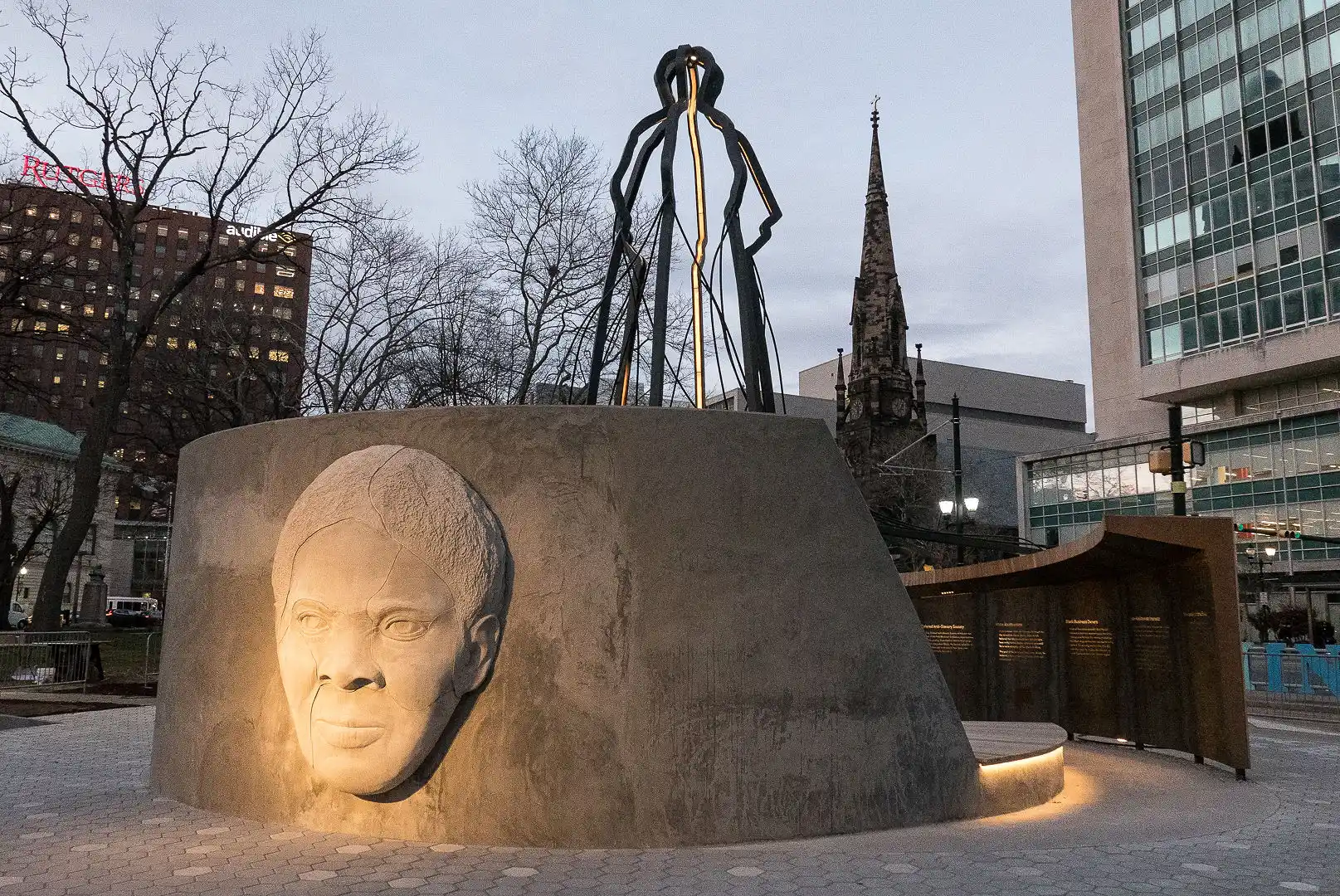
Unveiled in March, Cooke John's monument to Harriet Tubman replaces a statue of Christopher Columbus in downtown Newark. Photo by Cesar Melgar
Clay spoke of the State Department’s commitment to DFF in overseas building endeavors, which he said expends an average of $100 million monthly on projects throughout the world. While the State Department already has requirements in place for overseas contractors to ensure ethical working conditions on construction sites, Clay said that an industry advisory group is working to develop regulations that ensure worker’s rights throughout the supply chain.
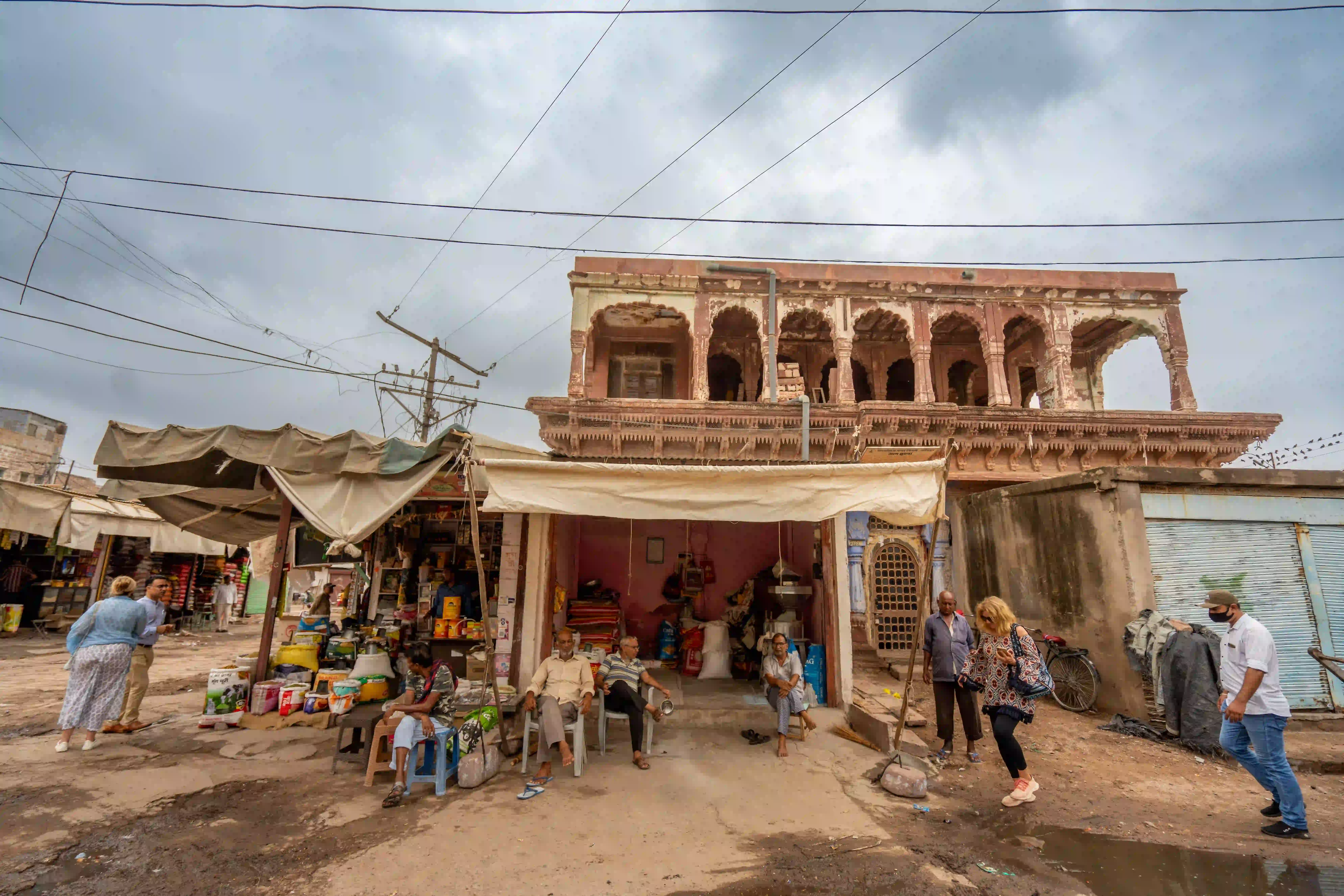
Jodhpur grain market. Photo by Siddhartha Joshi
Kellogg, whose eponymous New York-based firm’s design for the Rajkumari Ratnavati Girls School in rural northern India won a 2023 AIA Architecture Award, used the panel to announce her partnership with Grace Farms as her firm embarks on an ambitious urban regeneration project centered around the reactivation of a historic grain market in Jodhpur, a city in the Indian state of Rajasthan. “Who doesn’t want to be part of a revolution?” she said.
The second panel, moderated by MSNBC/NBC News anchor Richard Liu, addressed the “business case” for Design for Freedom. This is arguably one of the most important topics for the movement as it attempts to affect change in the economy on a global scale. Apart from Raphael Sperry of Arup, panelists hailed from outside of the AEC profession: Maha Khan of Finance Against Slavery and Trafficking (FAST), former US Customs and Border Control agent Ana Hinojosa, and Debbie Propst, president of retail for MillerKnoll. Khan, who called the continued existence of slavery a “modern economic tragedy,” relayed that investors are concerned with both the reputational and financial risks that come with associations with forced labor. “Investors like mandates,” she explained, not only to avoid potential legal and operational costs, but because informed customers are willing to pay more for a product that they know was made without forced labor. The main takeaway from the panel is that engaging with the financial sector, hand-in-hand with government regulation, will be key to the initiative’s success.
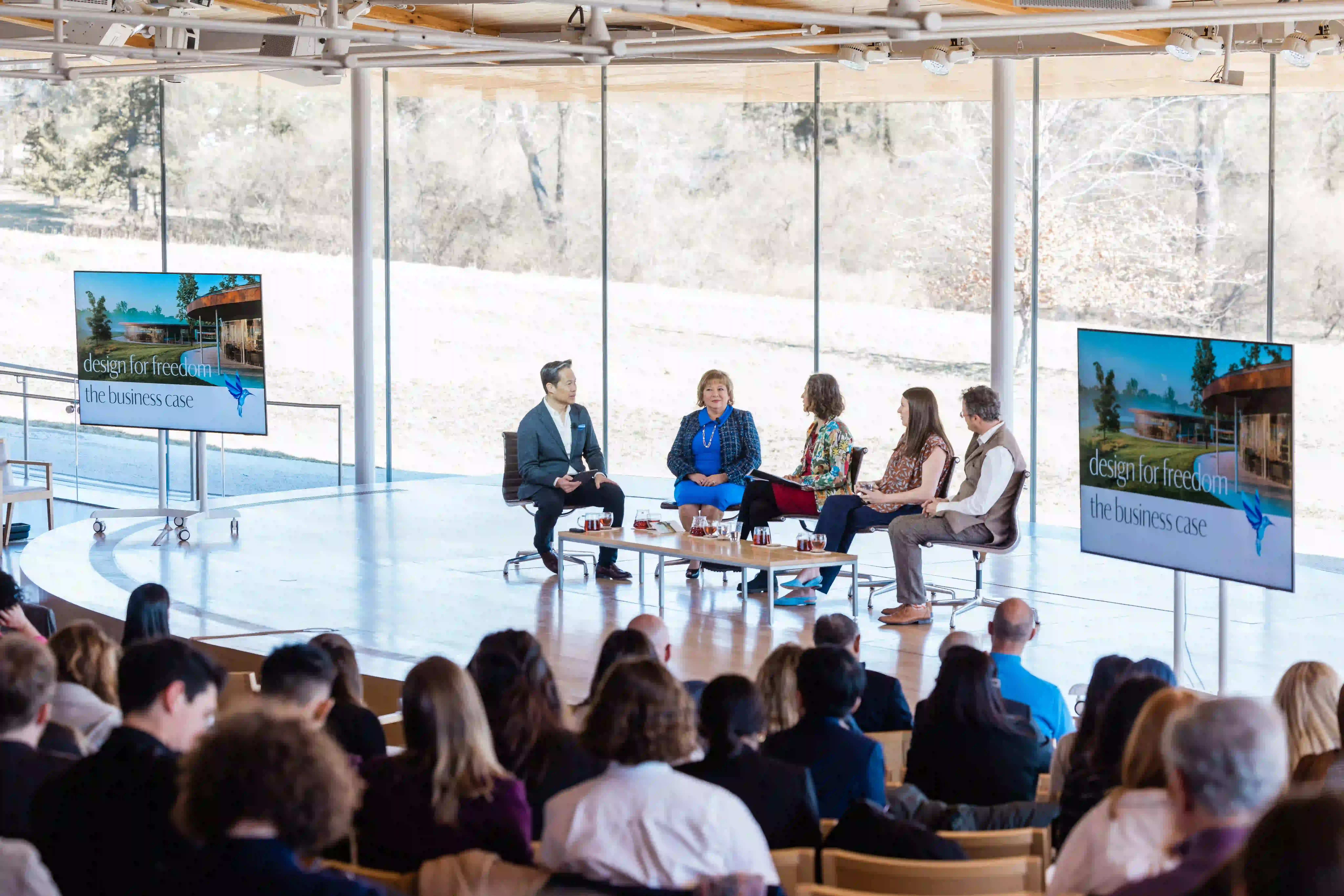
The Business Case panel at the 2023 Design for Freedom Summit. Photo by Jacek Dolata
During the final panel, conversation centered around materials that are at the highest risk for forced and child labor. This includes cobalt and copper, upon which the production of green technologies such as electric vehicle batteries and solar photovoltaics are heavily dependent. Panelist Cristina Villegas of the nonprofit Pact spoke of how child labor is most common in “artisanal mining” operations in the Congo, for instance, where the children involved are part of a working family unit. “We can’t just say ‘no child labor’ without offering alternatives to those trying to make a living,” she said, making a case for more thoughtful government incentives. Panelists also included Jim Vallette of nonprofit Material Research L3C, which collects and disseminates data about toxic materials; Dr. Shawn McDonald of Verité, a civil society organization dedicated to illuminating and remedying labor rights violations in supply chains; and Paul Bradley of multinational construction and real estate company Lendlease. Noting that architects are known for their preciseness, Bradley added: “What if they applied the same meticulousness to tracing their materials as they do to design?”
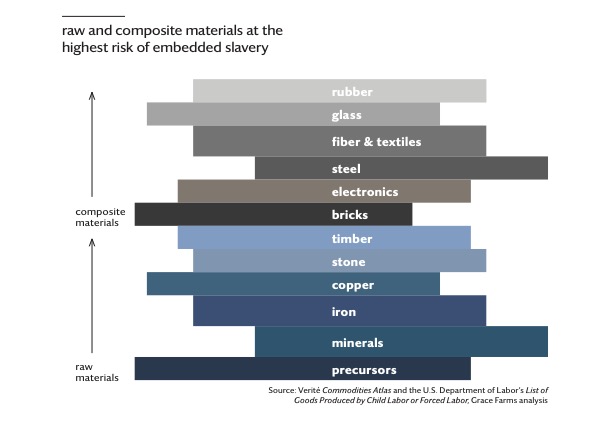
Infographic from the 2020 DFF report on forced labor in the construction industry. Courtesy Grace Farms/DFF
The last plea of Bradley’s—for architects to look up from their drawing boards as it were—is key to propelling the Design for Freedom initiative forward. According to a 2016 report by the International Labor Organization, the construction sector is at the highest risk for forced labor, which DFF argues is in part due to its opacity and complexity. Remedying the tangle of abuses that produce the conditions of modern slavery will require an intense degree of collaboration and knowledge-sharing between non-profit organizations, governments, and the often-disparate sectors of the larger building industry of which architects are a part.





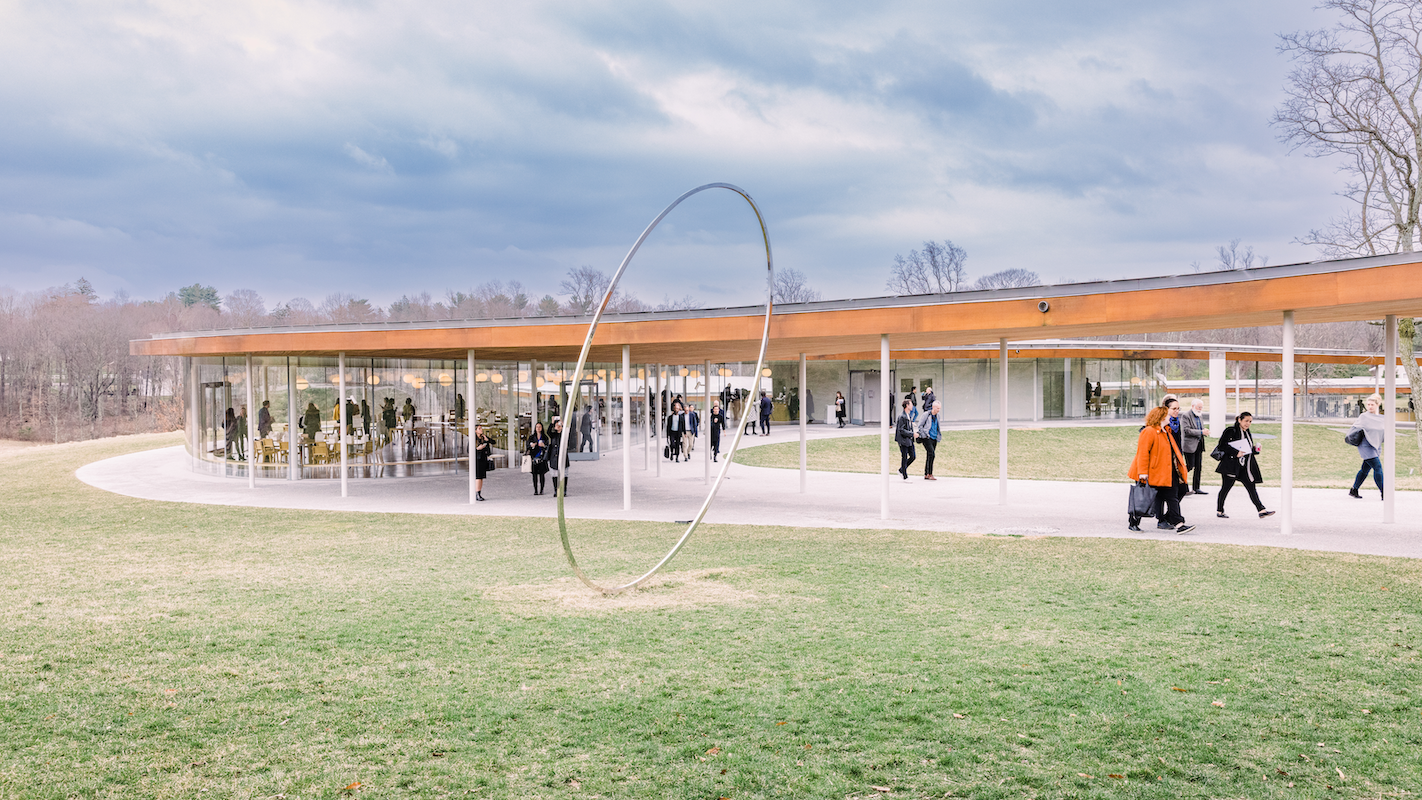

Post a comment to this article
Report Abusive Comment